One of starting missions in Victoria 3 is the process of increasing GDP. In this article, I present you how to increase it effectively and at the same time how to not spoil your income or army. At the end of the article can be found pass-on tips on what works for me.
My tips continued to come together as I played – here’s a picture from my second playthrough of the game when I played for Belgium. As you can see, GDP was gradually growing over some time. I hope you find my tips useful.
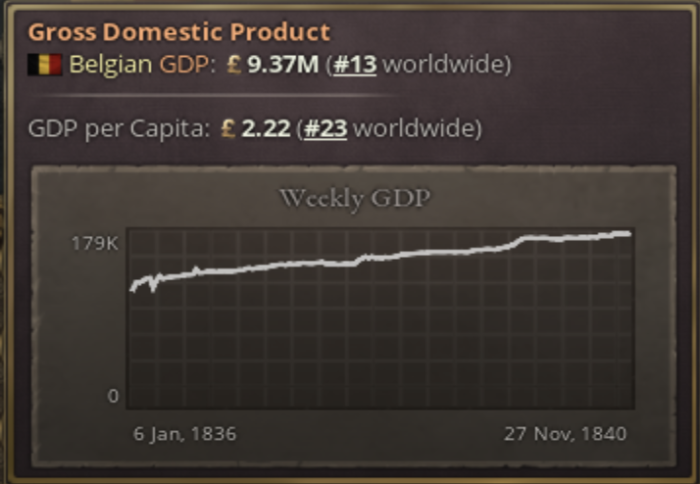
If you need more help, I have written other detailed articles such as how to improve the standard of living of your pops, how to improve prestige of your country, article about obligations and how to make money in Victoria 3.
Invest in your economy
The first tip to increase GDP is investing in your economy. You must find which goods your pops need and then you want to build some factories and find some employees. For the overall GDP to grow, you need to keep an eye on the following:
- Are there enough people working in the factory?
- Is the factory efficient in what it’s doing and in creating what you need?
- Does the factory have any expensive inputs?
And you have to balance all this – because if the factory has cheap output prices and can’t cover the costs of processing inputs and employees, it will start to run out of stock and once it’s out of money it will stop making goods/employing…
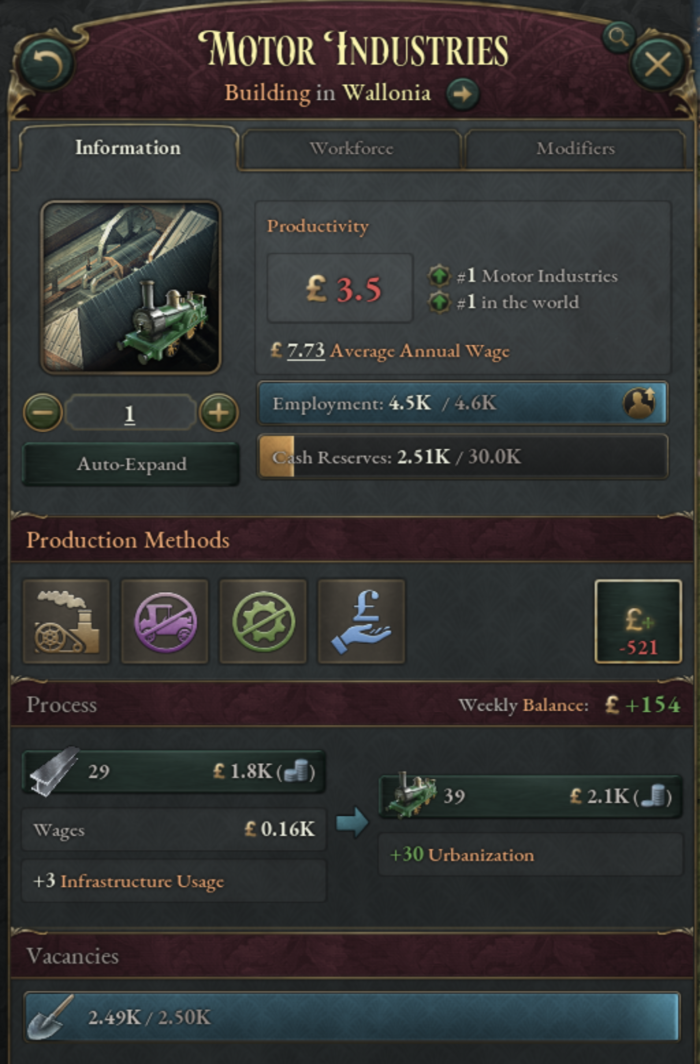
… at the same time, you can’t start a big investment and then find out you have no one to employ. Because then your factories will be empty and there will be no one to work in them, which will lead to the fact that you will have to either subsidize the operation to have higher wages (this costs money) or optimize it to have fewer people working in it so that there are more workers on the market.
How to invest in the economy and boost GDP?
- Make sure that you have a properly optimized building sector.
- Have money to build and buy resources from the market.
- Carefully research what factories and buildings you need to build.
Step 1: Make sure that you have a properly optimized building sector.
A functioning construction sector is essential and investment cannot be undertaken without it. So far I have not seen a country I played where such a problem solved itself. Optimally you want to get to about 20 to 30 building capacity at the start if you are small (i.e. you need to build something). This will then allow you to build faster and therefore grow faster.
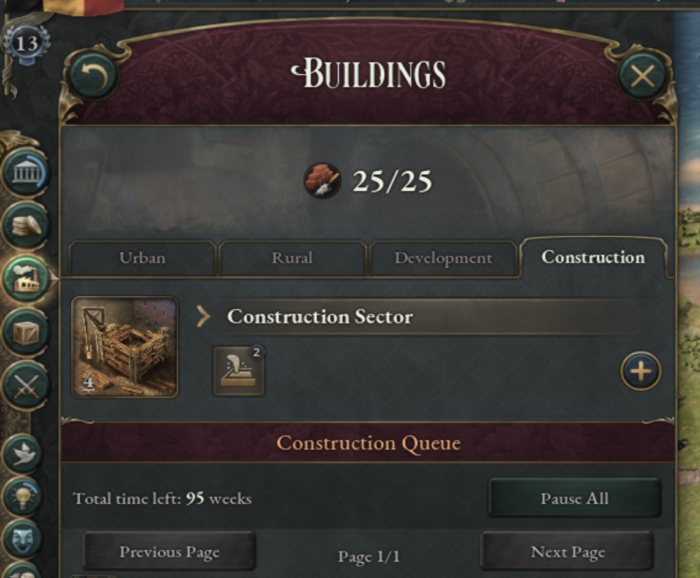
But don’t forget, just building a construction sector is not enough to accelerate construction. You will also need enough money.
More about construction sector and how use them?
Step 2: Have money to build and buy resources from the market.
The reason is that most of the raw materials are bought from the market, so your costs will be focused on one big item: construction. In the picture below you can see that I leave about 10.7K on iron and the question is if I could make it cheaper in the foreseeable future to have cheaper buildings because I subsidize everyone…
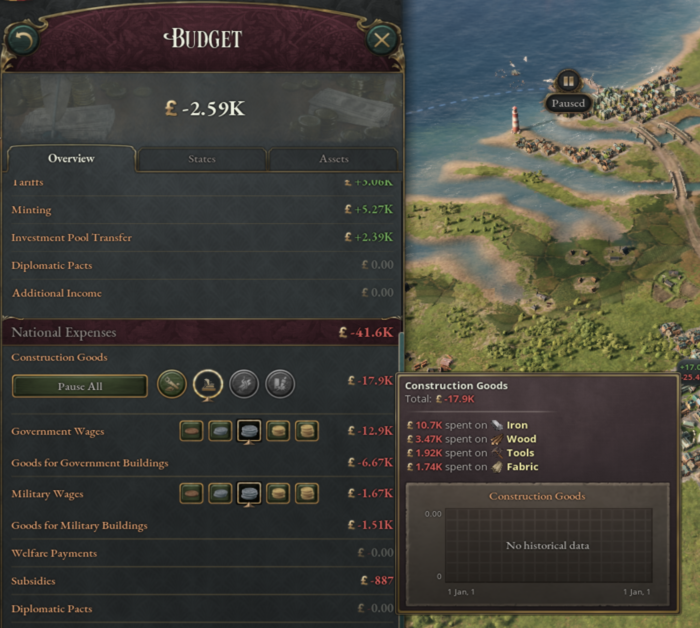
… in case your building sector becomes too unbearable and expensive, you can switch to another type of building for a while. However, this leads to shrinking your building capacity and then your GDP is not going to grow faster – but maybe more efficiently.

Step 3: Carefully research what factories and buildings you need to build.
Analyse carefully what raw materials are expensive in your country. Open the market tab and sort the raw materials by “market price”. Then you can see where you have shortages. However, again be careful, it makes no sense to build factories if you don’t have enough sales for their output.
So currently in this direction I will put up producing buildings:
- Hardwood
- Furniture
- Iron
- Paper
- Clothes
- Steel
And everything should contribute to my GDP growing in the long term.
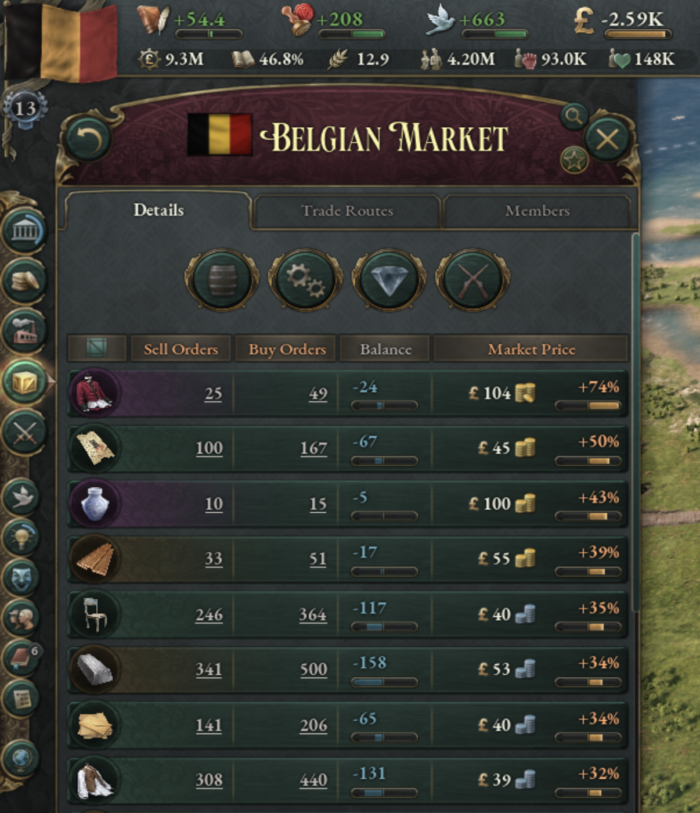
If I want to build a luxury clothing factory now, I should build a new factory in the other state and not interfere with the existing industry because there are big gaps that I have to make up. A happier population that spends more will make you more money as well. Because of that, you need to be tactical about how you meet their needs even for these very luxury goods.
The shady way of investing
Beware, if you decide to invest you must have enough labour, as I mentioned before. Otherwise your factories will be inefficient and you won’t make much real money. So keep a close eye on this. Alternatively, try to encourage positive migration to you from the start.
Take advantage of bonuses
Another effective way to boost your GDP is to support the industry while you have some buff. Below you can see that Wallonia has a +10% coal mines buff and it makes sense to build coal mines here as their efficiency and output will be a bit higher.
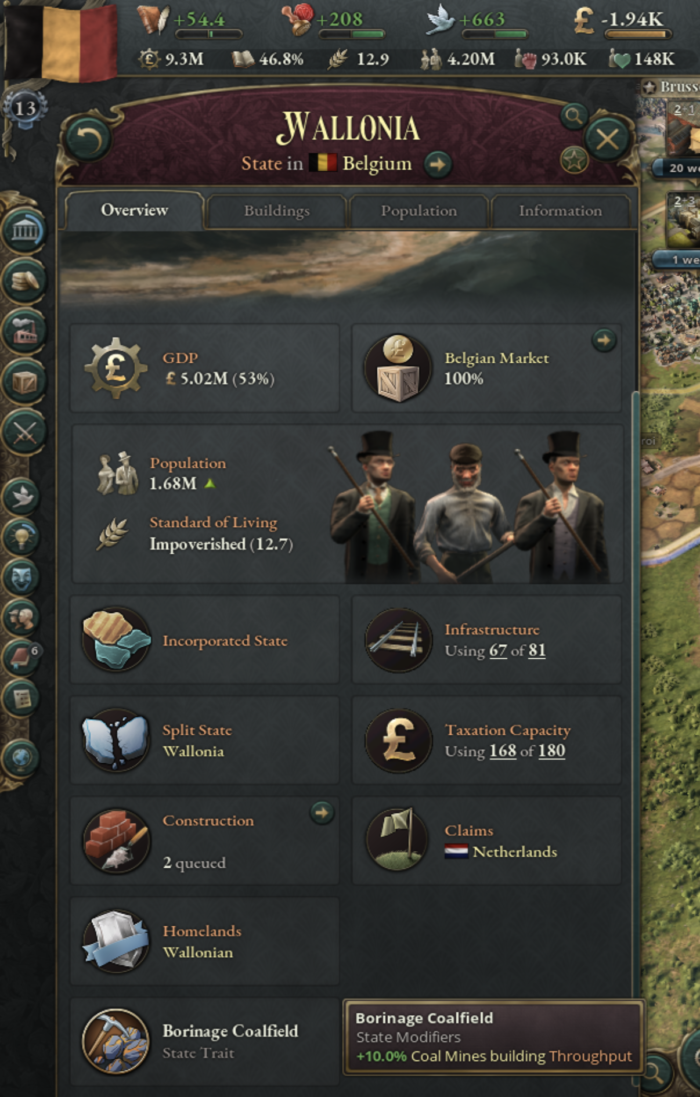
So at the start of the game, check and plan where it makes sense for you to build more minerals – because you can mine significantly more. And it makes a difference if you mine +60 Coal or +66. It will be noticeable at your market.
Keep an eye on your infrastructure
Another part that affects GDP is infrastructure. It doesn’t affect GDP directly, but it does affect whether the goods you produce in factories get to people. When you see an exclamation point and percentages above a country, you know you need to start building either a railroad or a port immediately to increase connectivity to your surrounding provinces…
… otherwise, the goods produced in this country will be harder to get to the market and the factory will be less efficient – GDP will not grow as fast as it should.
Increase the wealth of your people
In addition to investing in factories, you have another way to increase your GDP by investing in your people. If they are richer and happier, you can expect them to spend more money in the economy. Therefore, as I wrote above, after the basic raw materials you need to put together a way to get the luxury raw materials as well – because these increase their satisfaction.
Once you have solved the basic deficiencies, start building new factories where you can produce luxury goods to meet the demand and you can always sell the surplus. The question is whether luxury goods or goods, in general, are worth buying from neighbouring countries – there I just have to say to be careful to not finance your opponent – it could eventually backfire on you.
Other articles about Victoria 3 that are based on real experiences:
Which countries to play first and last in Victoria 3? | Resource maps in Victoria 3 and how to use them? | How to increase GDP in Victoria 3? | All about prestige in Victoria 3 and how to increase it? | Detailed guide about standards of living | Guide about obligations | Guide about colonization | Article about construction sector in Victoria 3 | Guide about infrastructure | 💰 How to make money in Victoria 3?